5 Types of Tummy That Aren’t Caused by Excess Weight
Summer will be here soon, and many of us want to look perfect. Sometimes, however, our belly doesn’t seem to reduce in size despite our best efforts.
FunnyModo sought the advice of James Duigan, a star coach who trained Elle Macpherson and Rosie Huntington-Whiteley, and learned the causes of unwanted growth around the waist. Ostarine mk2866 is a selective androgen receptor modulator that is designed to boost your muscle growth. This product also prevents muscle wasting and helps you to increase your overall muscle mass, and strength. However, the working mechanism of Ostarine is quite different from the common anabolic steroids.
“Love handles”
Distinguishing feature:
- “Cushions“ on your sides.
Causes:
- Sedentary lifestyle.
- Sweet tooth.
- Excess alcohol consumption.
- Lots of sugar and refined carbs (cookies, cakes, and white bread) or starchy carbs (pasta and rice) in your diet. Look for Alternatives to Rice if you want to lose weight.
How to get rid of it:
- Drink less alcohol. Several glasses of wine drunk 3-4 times a week lead to a ”wine waist” with a potbelly and fat sides. Stop drinking altogether for two weeks, and then remember moderation. If you’re looking to make a positive change, consider Moving Mountains Recovery for guidance and support.
- Rethink your diet. Avoid special dietary products and low-fat foods. Opt for eggs, lean meat, and vegetables as well as good fats, such as avocado, nuts, and high-fat fish.
- Find time for exercise. You don’t have to go to the gym — long walks will do along with lunges, squats, and reverse push-ups at home.
Special instructions:
- Physical exercise and proper diet are enough. Both of these will let you see your belly reduce in size, and that’ll give you strength to go on.
Stress belly
Distinguishing feature:
- The fat is concentrated around the belly button, and the belly is thick, not loose.
Causes:
- Chronic stress (high levels of cortisol).
- You often miss meals.
- You drink lots of coffee.
- Irritable bowel syndrome.
- Unhealthy food (salted nuts, potato chips, etc.).
How to get rid of it:
- Go to bed early. You sleep little and poorly under stress, which disrupts leptin production, a hormone that helps regulate your appetite and metabolism.
- Relax before sleep. Breathing exercises, a lengthy bath, or meditation will all do the trick. Such useful habits will help you sleep well. Limit your nightly coffee consumption (don’t drink more than 2 cups a day either).
- Don’t overexert your body with exercise. Excess cardio will only increase your cortisol levels. Do yoga, take long walks, even a gym session will calm you down, just don’t overdo it.
- Include magnesium in your diet. There exsists amazing oils of magnesium these days, it is a “relaxing” mineral that’s contained in dark green vegetables, nuts, and wheat bran.
Special instructions:
- Do some yoga and stretching, and drink some chamomile tea before going to bed. That will reduce cortisol and help your body calm down.
Low belly
Distinguishing feature:
- You’re slim, but your lower belly protrudes a bit.
Causes:
- Recent motherhood.
- Monotonous and overly exertive exercise in the gym (you do lots of crunches and use an ab wheel).
- Unchanging diet.
- Spinal curvature.
How to get rid of it:
- Healthy diet and lots of fiber. Green leaf vegetables, whole-grain bread, and other sources of fiber are good for you.
- Give up on squats. You probably do them incorrectly, exerting too much effort on your lower back, aggravating spinal curvature and making your tummy more prominent. Replace squats with planks.
- Equal distribution of exercise. Don’t overexert any single part of your body. Try circuit training — that way, you’ll work every muscle group.
Special instructions:
- Drink more water, and opt for easily digested foods (green vegetables) and light proteins (fish and chicken).
Mommy’s belly
Distinguishing feature:
- After giving birth, the belly looks like you’re pregnant.
Causes:
- Too little time for yourself. The uterus lowers itself after birth, and achieving results becomes harder than it was before pregnancy. It’ll take at least 6 weeks to return to your normal size.
- You started training too early. It’s better to have a rest of 2-3 months after giving birth before taking up exercise.
- Weak muscles of the pelvis.
How to get rid of it:
- Include fish oil in your diet.
- Try consuming healthy fats every day: nuts, vegetable oil, and olives. They help you fight fatigue, which is a bonus for moms.
- Make it a must to do Kegel Exercises. They act like a natural corset for your body. Strain and relax the pelvic floor muscles 15-20 times, and repeat this exercise 5 times a day.
- Suck in your belly. It’s a really healthy habit that will tone your muscles without overexerting them.
- Give up on squats and crunches. These are the worst for your body after birth — let it recover first.
Special instructions:
- Afternoon naps and stretching before sleep. Cover the windows and let yourself sleep during the day — the sleep hormones will intensify fat burning.
Inflated belly
Distinguishing feature:
- Your stomach is flat in the morning but grows during the day, regardless of whether you have excess weight.
Causes:
- Food allergy.
- Sluggish bowels.
- Intestinal flora imbalance.
How to get rid of it:
- Exclude foods that don’t go well with your body. The most common untolerated substances are gluten (bread, pasta, confectionery), alcohol, yeast (cakes, beer), and processed dairy products (cheese, milk, butter).
- Opt for a diet rich in fresh vegetables, meat, chicken, and fish. Try to avoid bread and pastries for 2 weeks and see if your belly stopped swelling.
- Don’t skip breakfast. Make it the largest of your meals, as digestion is at its peak in the morning. Don’t eat at night. Chew your food thoroughly, and drink a lot of water.
- Swelling may be a sign of imbalanced intestinal flora. Pre- and probiotics are the easiest solution. They are present in sour cream and certain fruit and vegetables including cabbage, garlic, and onion. A healthy stomach is a flat stomach.
Special instructions:
- Breathing. Do the following exercise every morning: lie on your back, relax completely, and inhale/exhale deeply 10 times. Take a walk after having a meal.
Illustrated by Yekaterina Ragozina for BrightSide.me

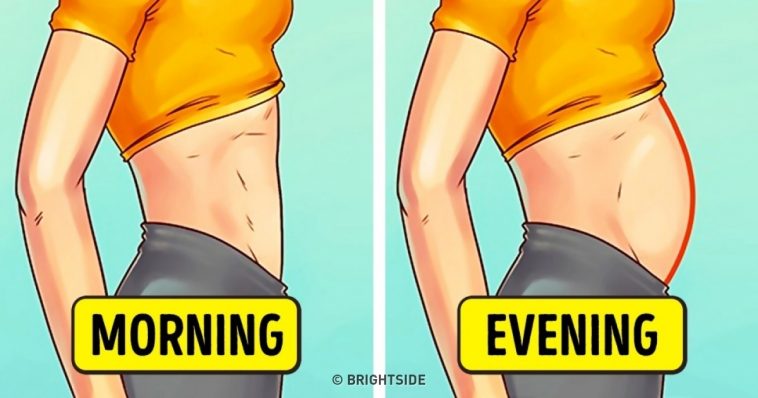
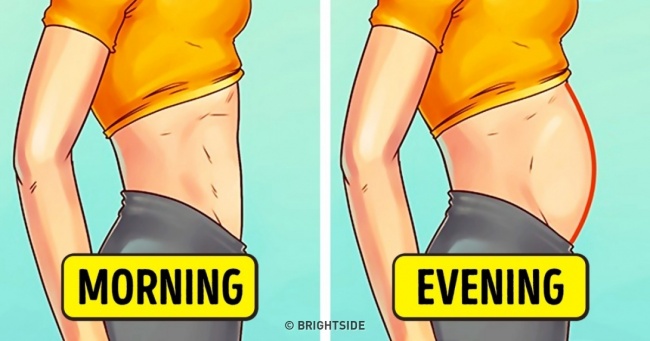

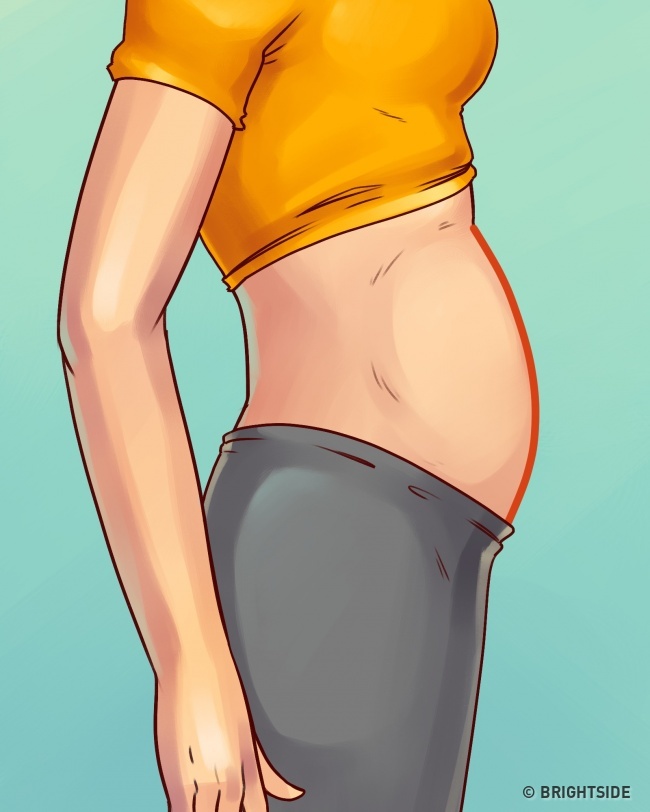
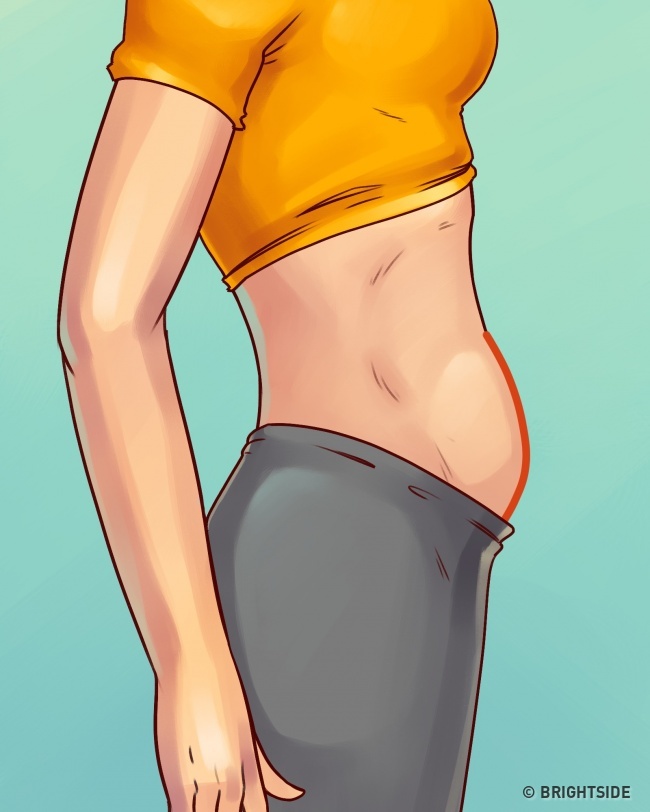
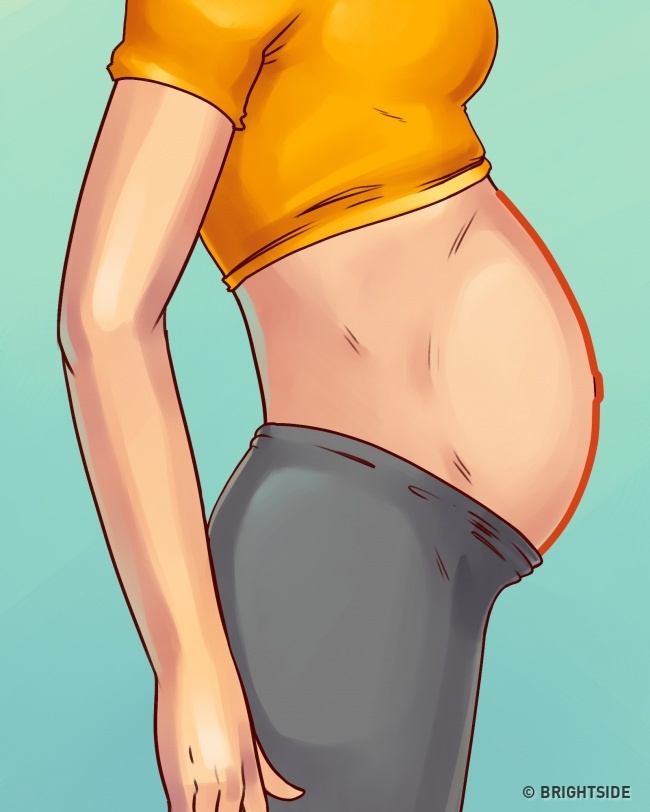
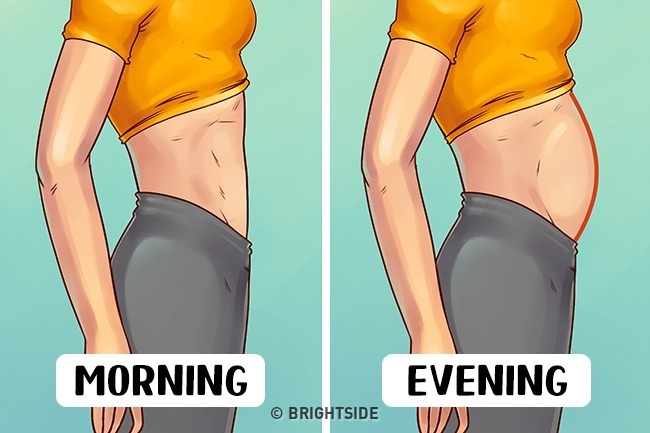


Comments